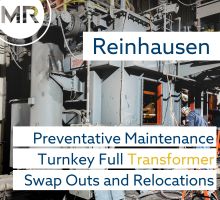FeMET Initiative Issues Curriculum Development Program Grants
10/04/2007 - The FeMET Initiative has awarded curriculum development grants to seven university professors to fund proposals designed to enhance or update industry curriculum in ferrous metallurgy programs.
The American Iron and Steel Institute (AISI) and the Association for Iron & Steel Technology (AIST) Foundation’s FeMET Initiative has awarded its curriculum development grants for the 2007–2008 school year.
Seven university professors have been awarded US $5,000 each to fund proposals designed to enhance or update industry curriculum in ferrous metallurgy programs. Since 2005, the program has awarded in excess of $80,000 in curriculum development grants.
|
“Ferrous Metallurgy Education Today” — also known as the FeMET Initiative — endeavors to attract top scholastic talent to the North American steel industry.
This FeMET program has awarded more than $80,000 in steel-related curriculum development grants.
The FeMET Initiative is sponsored by the American Iron and Steel Institute (AISI) and the Association for Iron & Steel Technology (AIST) Foundation.
|
Winning proposals for 2007-2008 were submitted by Dr. Siva Guruswamy of the University of Utah in Salt Lake City, Utah, and Dr. Thomas E. Graedel and Dr. Robert B. Gordon of Yale University in New Haven, Conn.
Renewed proposals for 2007-2008 were submitted by:
- Dr. Thomas J. Balk, University of Kentucky, Lexington, Ky.
- Dr. Harvey Abramowitz, from Purdue University Calumet, West Lafayette, Ind.
- Dr. Kip O. Findley, Washington State University, Pullman, Wash.
- Dr. John G. Speer, Colorado School of Mines, Golden, Colo.
- Dr. Robert H. Wagoner, The Ohio State University, Columbus, Ohio
According to Ron Ashburn, AIST Executive Director, “Through the FeMET curriculum development grants, each of these universities has generated a greater awareness of ferrous metallurgy within their respective student bodies, which has fulfilled our initial objective. Now we have to find innovative ways to expand the program’s reach to include many more schools.
“The early success of FeMET can be measured by the thirty-plus student scholarships awarded to date. Expanding the Curriculum Development Grant program will directly lead to more scholarship applicants,” said Andrew G. Sharkey III, president and CEO of AISI.
The Association for Iron & Steel Technology (AIST) is an international technical association with more than 13,000 members representing iron and steel producers, their allied suppliers and related academia. The association is dedicated to advancing the technical development, production, processing and application of iron and steel through a variety of educational and networking programs. The AIST Foundation seeks to attract young, technology-oriented professionals to the industry by promoting the high-tech, diverse and well-paying natures of careers in modern steelmaking. For more information about AIST, visit http://www.aist.org.
AISI serves as the voice of the North American steel industry in the public policy arena and advances the case for steel in the marketplace as the preferred material of choice. AISI also plays a lead role in the development and application of new steels and steelmaking technology. AISI is comprised of 31 member companies, including integrated and electric furnace steelmakers, and 130 associate and affiliate members who are suppliers to or customers of the steel industry. AISI's member companies represent approximately 75% of both U.S. and North American steel capacity. View AISI’s website at http://www.steel.org.



.jpg?lang=en-US&ext=.jpg)
.gif?width=220&height=200&mediaprotectionhash=374c6b9a31f2b2fbfc7937391034efb46fd57feba997b9ad2ae9a0bd3d48329d&ext=.gif)

.gif?width=100&height=200&mediaprotectionhash=e2d5b15d68f84f22038524be6c58e5268d67b7f44494b544e29a8d53c5b959ba&ext=.gif)


